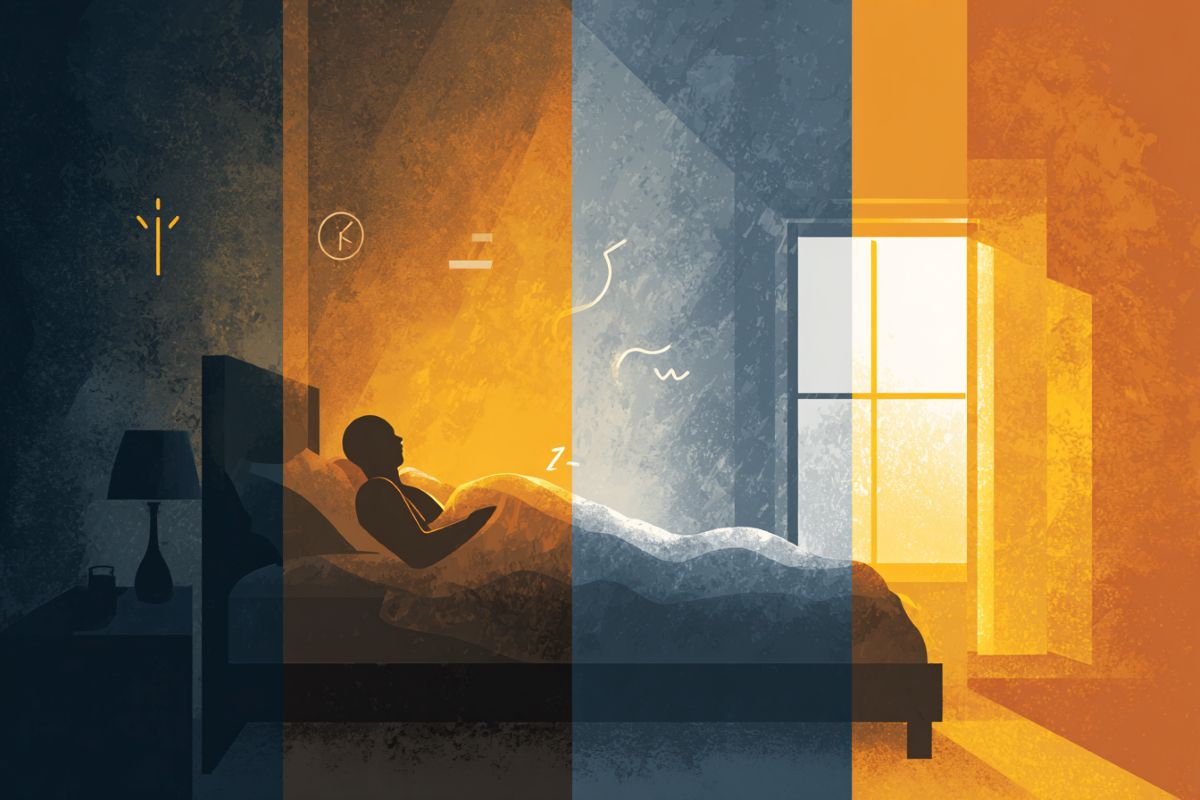Summary: A large-scale study shows that indoor environmental changes—such as cooler bedroom temperatures at night and brighter indoor light during the day—can significantly improve sleep in people living with dementia. Researchers analyzed over 26,000 days of data using contactless sensors placed in participants’ homes.
Hot nights were linked to disrupted sleep and higher breathing rates, while brighter days promoted longer, more restful sleep. The findings suggest simple environmental adjustments may improve quality of life, reduce symptoms, and support independent living in dementia.
Key Facts
- Hot Nights Harm Sleep: Higher nighttime bedroom temperatures disrupted sleep and increased breathing rates.
- Light Helps Rest: Brighter daytime indoor light improved sleep quality and duration.
- Simple Fixes Matter: Environmental adjustments may reduce symptoms and extend independent living.
Source: University of Surrey
Implementing changes to indoor environments, such as cooler bedrooms at night and increasing the amount of bright light during the day, could significantly improve sleep for people living with dementia, according to a study led by the University of Surrey.
The study, published in the journal Sleep, analysed more than 26 thousand days and nights of data collected by zero-burden technologies, such as under-the-mattress bed sensors, contactless monitoring of bed occupancy and environmental sensors. Researchers found that bedroom temperature and daytime indoor light are associated with objectively measured sleep.
The study found that seasonal changes in the outdoor temperature and light environment were reflected in changes in the indoor environment, with associated changes in sleep timing, duration and heart rate patterns.
Even accounting for seasonal changes, on nights that bedrooms were hotter than usual, people living with dementia had more disrupted sleep and higher breathing rates, while on days on which light indoors was brighter than usual, people had longer, less fragmented sleep and lower breathing rates.
Sleep difficulties are commonly reported in dementia, with restless nights, long daytime naps and a disrupted body clock often undermining quality of life, with more memory problems following nights of broken sleep. Improving sleep by optimising bedroom temperature and daytime light may therefore have also beneficial effects on common symptoms in dementia.
Professor Anne Skeldon, Head of the School of Mathematics at the University of Surrey and co-author of the study, said:
“We have analysed millions of hours of data, which has allowed us to see how temperature and light patterns inside the home can impact sleep for people living with dementia.
“Unlike short-term studies or carer reports, our approach captures long-term patterns in real homes, offering new insights into sleep disruption and how sleep disruption could be reduced.”
These zero-burden technologies do not need to be worn or recharged, significantly enhancing their capability to collect data over long periods of time. This enables measurement of sleep characteristics, aspects of breathing and heart rate and indoor light and temperature across seasons and years without any burden to participants.
Working in collaboration with Imperial College London, Surrey and Borders Partnership NHS Foundation Trust, and funded by the UK Dementia Research Institute, through the Care Research & Technology Centre, researchers assessed 26,523 days of data from 70 people living with dementia who were living in their own homes to build a detailed picture of how the environment affects sleep.
Data were collected in line with the Care Research & Technology ambition to use zero-burden sensors placed under mattresses and throughout homes, to provide clinical guidance which will help people remain in their own homes for longer.
Surrey’s study found that some homes were uniformly hot, day and night, summer and winter. Suggesting that during the winter, turning down the thermostat at night could improve sleep, which may also save on energy costs.
The study also found that the effects of temperature and light varied widely between individuals, suggesting that some people are far more sensitive to seasonal and environmental changes than others. Notably, the team found that sleep timing in people with dementia tended to follow the clock rather than natural sunrise and sunset.
With climate change making hot nights more frequent, ensuring cooler bedrooms and brighter indoor light could become an increasingly important way to improve the daily lives of this vulnerable group, who often spend most of their time indoors.
Professor Derk-Jan Dijk, Director of the Surrey Sleep Research Centre and co-author of the study, said:
“This study demonstrates the power of longitudinal and simultaneous monitoring of the indoor environment, sleep and physiology. We often forget the importance of the indoor environment for health, even though we spend most of our 24-hour day inside.
“Novel digital health technologies now enable the monitoring of the impact of the indoor environment on physiology and behaviour without any burden to the participants. The further development of ‘zero burden technologies’ holds great promise for monitoring health and preventing ill-health in the community.’
About this Alzheimer’s disease research news
Author: Anne Skeldon
Source: University of Surrey
Contact: Anne Skeldon – University of Surrey
Image: The image is credited to Neuroscience News
Original Research: Closed access.
“Seasonal and daily variation in indoor light and temperature are associated with sleep disturbance in dementia” by Anne Skeldon et al. SLEEP
Abstract
Seasonal and daily variation in indoor light and temperature are associated with sleep disturbance in dementia
Mechanisms regulating human sleep and physiology have evolved in response to rhythmic variation in environmental variables driven by the Earth’s rotation around its axis and the Sun.
To what extent these mechanisms are operable in vulnerable people who are primarily exposed to the indoor environment remains unknown.
We analyzed 26 523 days of data from outdoor and indoor environmental sensors and a contactless behavior-and-physiology sensor tracking bed occupancy, heart, and breathing rate in 70 people living with dementia.
Indoor light and temperature, sleep timing, duration, and fragmentation, as well as the timing of the heart rate minimum, all varied across seasons.
Beyond the effects of season, higher bedroom temperature and less bright indoor daytime light are associated with more disrupted sleep and higher respiratory rate.
This sensitivity of sleep and physiology to ecologically relevant variations in indoor environmental variables implies that implementing approaches to control indoor light and temperature can improve sleep.







